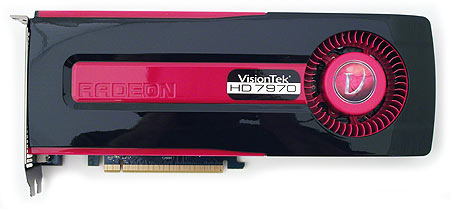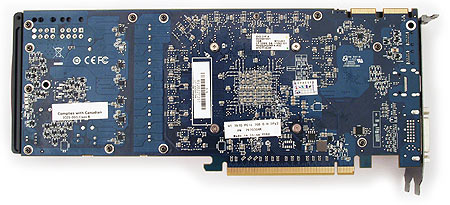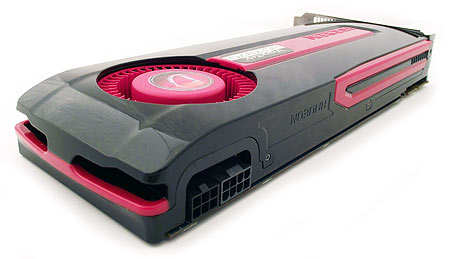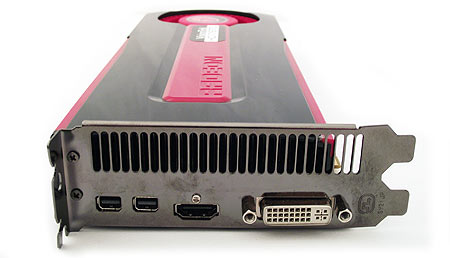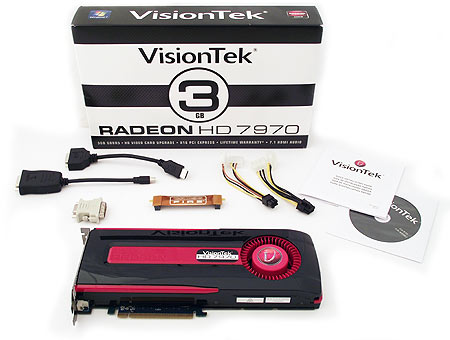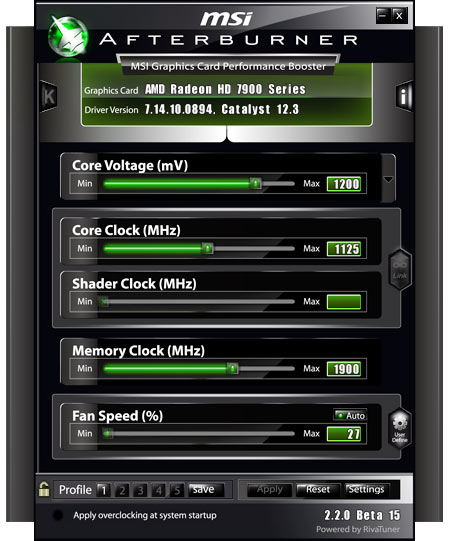Five Radeon HD 7970 3 GB Cards, Overclocked And Benchmarked
GeForce GTX 680 cards are nowhere to be found, and the Radeon HD 7970 recently dropped to a much more attractive price. We thought it was time to round up a handful of Tahiti-based cards to see how board partners are improving upon AMD's original recipe.
VisionTek Radeon HD 7970
VisionTek was the first company to supply us with a Radeon HD 7970 for this article, and the company’s entry doesn’t deviate from AMD's reference design. Its 2 lb 3 oz weight and 11” x 4.5” x 1.5” dimensions are the same as the sample we received when Radeon HD 7970 launched. Priced at $479.99 on Newegg, this is the most affordable board in our round-up.
Bearing such close resemblance to AMD’s standard, it comes as no surprise that VisionTek’s interpretation of the Radeon HD 7970 employs the same 925 MHz core and 1375 MHz memory clocks, nor that it requires both six- and eight-pin auxiliary power connectors.
A single 70 mm centrifugal fan stands apart from the rest of the products in this review, all of which use two or three axial-flow fans instead. As with the reference model, VisionTek’s GPU cooling block contains a copper vapor chamber with aluminum fins directly attached, and none of the heat pipes we see on the other models.
Display outputs are also standard fare, including one dual-link DVI port, HDMI, and two mini-DisplayPort connectors.
VisionTek’s Radeon HD 7970 comes with a CrossFire bridge, DVI-to-VGA, HDMI-to-DVI, and mini-DisplayPort-to-DVI adapters, a dual four-pin Molex-to-six-pin auxiliary power adapter, a dual four-pin Molex-to-eight-pin power adapter, a software install CD, and a quick-install guide. We’re impressed that this card includes all of the output adapters needed in order to achieve a three-display Eyefinity configuration using DVI connectors.
Overclocking VisionTek's Radeon HD 7970
Though VisionTek doesn't bundle any overclocking software of its own, the Catalyst Control Center’s Overdrive utility can push core and memory clocks up to 1125 and 1575 MHz, respectively. Employing MSI’s Afterburner utility increases those ceilings to 1800 MHz (for the GPU) and 1950 MHz (on the memory) with a voltage limit of 1.3 V.
Get Tom's Hardware's best news and in-depth reviews, straight to your inbox.
While this card's core didn't scale quite as high as some others, its memory turned out to have quite a bit of headroom available. We managed a maximum stable core overclock of 1125 MHz, with memory operating at 1900 MHz. That's the highest memory overclock in this story. We went with a 1.2 V setting, too.
Current page: VisionTek Radeon HD 7970
Prev Page Sapphire HD 7970 OC Next Page Test System Setup And BenchmarksDon Woligroski was a former senior hardware editor for Tom's Hardware. He has covered a wide range of PC hardware topics, including CPUs, GPUs, system building, and emerging technologies.
-
aznshinobi I need a new pair of pants. Definitely graphics card eye candy. Specially the Sapphire one IMO. Do I hear giveaway THG?Reply -
schnitter I need to replace my 5870 HD I bought over 3 years ago. I can still play any game on HIGH at 1080p, but I want ULTRA on BF3 and Max Payne 3.Reply
Lets hope the 680 GTX becomes available to see what price these AMD cards end up at. I like AMD and how they don't rebrand their cards like nVidia, but $20 cheaper than 680 GTX is not cheap enough to sway me that way. -
hellfire24 why a reference card(visiontek 7970) with non reference competitors?Reply
i am impressed with HIS IceQ X2 Turbo X but still MSi lightning is my favorite.they have beefier VRMs,great cooling and are overclocking beasts.
-
confish21 Nice write up! Really helps when trying to peg down a card. Will be revisiting alot!Reply -
blazorthon nekromobovisiontek for "Particularly at its modest $279 price." $379 or $479??Reply
$479.99 (USD) is more or less the cheapest price point for any Radeon 7970. -
weatherdude Cool review. It'd be nice if SI units were included in the weights and lengths though. Guess I'll have to do a little math. It's very nice to know that the non-reference coolers are much quieter (excluding Gigabyte's) than the original design.Reply
Let's see some typos:
In the 'Test System Setup And Benchmarks' page in the Operating System row it is written as Microsoft Windows 7 x6. I assume it's supposed to be x64.
In the first paragraph of the 'Sapphire HD 7970 OC' page the card is described as "HD 7970 PC".
